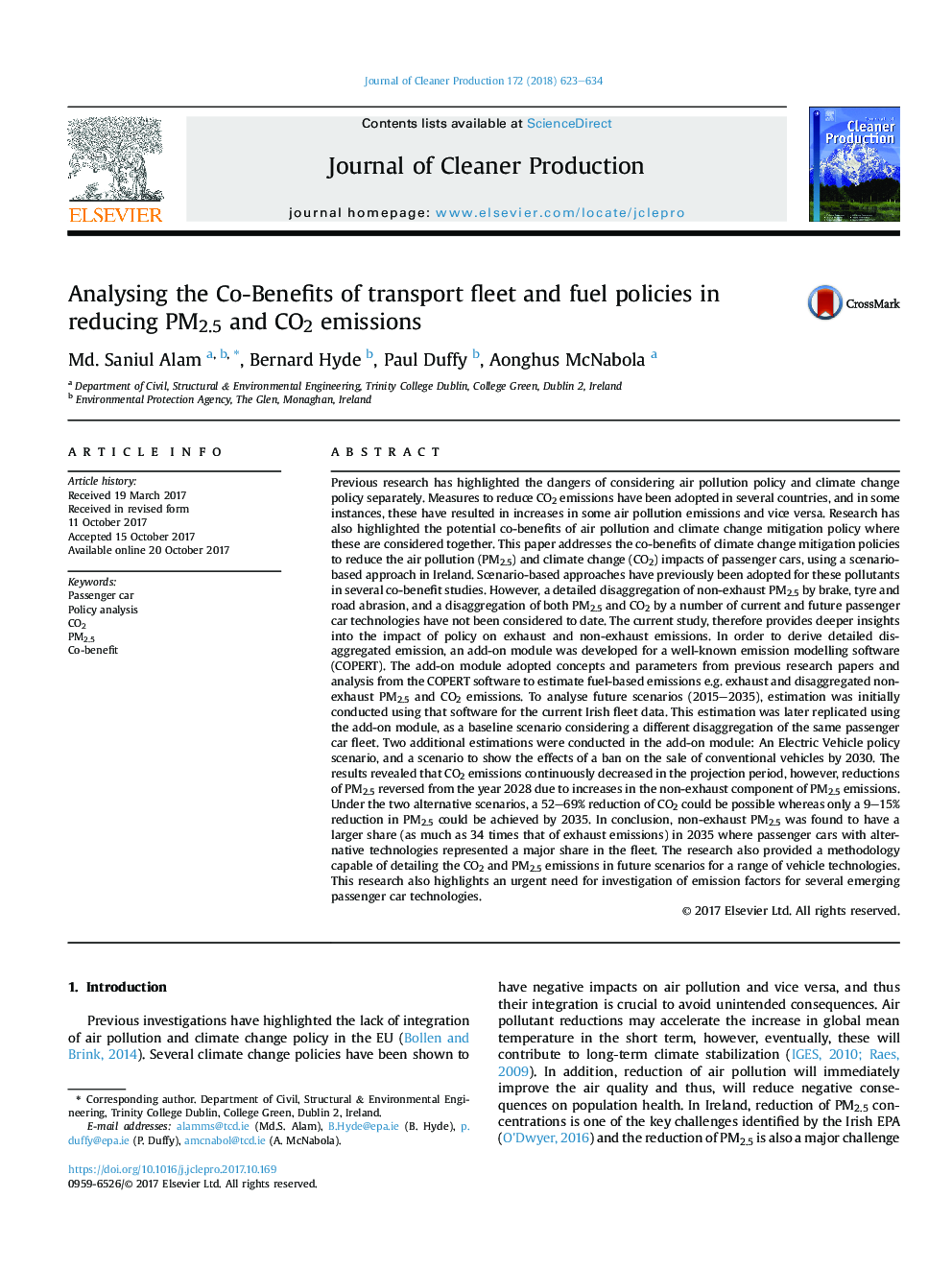| کد مقاله | کد نشریه | سال انتشار | مقاله انگلیسی | نسخه تمام متن |
|---|---|---|---|---|
| 8099978 | 1522081 | 2018 | 12 صفحه PDF | دانلود رایگان |
عنوان انگلیسی مقاله ISI
Analysing the Co-Benefits of transport fleet and fuel policies in reducing PM2.5 and CO2 emissions
دانلود مقاله + سفارش ترجمه
دانلود مقاله ISI انگلیسی
رایگان برای ایرانیان
کلمات کلیدی
موضوعات مرتبط
مهندسی و علوم پایه
مهندسی انرژی
انرژی های تجدید پذیر، توسعه پایدار و محیط زیست
پیش نمایش صفحه اول مقاله

چکیده انگلیسی
Previous research has highlighted the dangers of considering air pollution policy and climate change policy separately. Measures to reduce CO2 emissions have been adopted in several countries, and in some instances, these have resulted in increases in some air pollution emissions and vice versa. Research has also highlighted the potential co-benefits of air pollution and climate change mitigation policy where these are considered together. This paper addresses the co-benefits of climate change mitigation policies to reduce the air pollution (PM2.5) and climate change (CO2) impacts of passenger cars, using a scenario-based approach in Ireland. Scenario-based approaches have previously been adopted for these pollutants in several co-benefit studies. However, a detailed disaggregation of non-exhaust PM2.5 by brake, tyre and road abrasion, and a disaggregation of both PM2.5 and CO2 by a number of current and future passenger car technologies have not been considered to date. The current study, therefore provides deeper insights into the impact of policy on exhaust and non-exhaust emissions. In order to derive detailed disaggregated emission, an add-on module was developed for a well-known emission modelling software (COPERT). The add-on module adopted concepts and parameters from previous research papers and analysis from the COPERT software to estimate fuel-based emissions e.g. exhaust and disaggregated non-exhaust PM2.5 and CO2 emissions. To analyse future scenarios (2015-2035), estimation was initially conducted using that software for the current Irish fleet data. This estimation was later replicated using the add-on module, as a baseline scenario considering a different disaggregation of the same passenger car fleet. Two additional estimations were conducted in the add-on module: An Electric Vehicle policy scenario, and a scenario to show the effects of a ban on the sale of conventional vehicles by 2030. The results revealed that CO2 emissions continuously decreased in the projection period, however, reductions of PM2.5 reversed from the year 2028 due to increases in the non-exhaust component of PM2.5 emissions. Under the two alternative scenarios, a 52-69% reduction of CO2 could be possible whereas only a 9-15% reduction in PM2.5 could be achieved by 2035. In conclusion, non-exhaust PM2.5 was found to have a larger share (as much as 34 times that of exhaust emissions) in 2035 where passenger cars with alternative technologies represented a major share in the fleet. The research also provided a methodology capable of detailing the CO2 and PM2.5 emissions in future scenarios for a range of vehicle technologies. This research also highlights an urgent need for investigation of emission factors for several emerging passenger car technologies.
ناشر
Database: Elsevier - ScienceDirect (ساینس دایرکت)
Journal: Journal of Cleaner Production - Volume 172, 20 January 2018, Pages 623-634
Journal: Journal of Cleaner Production - Volume 172, 20 January 2018, Pages 623-634
نویسندگان
Md. Saniul Alam, Bernard Hyde, Paul Duffy, Aonghus McNabola,